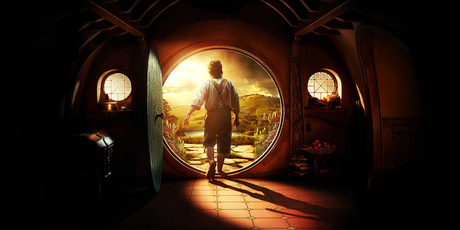When the red carpet rolls out in Wellington next month for the first of The Hobbit trilogy, it will complete a 75-year journey from modest success to billion dollar business. Yet, Greg Dixon finds, that the little book that helped spawn an industry might not have seen the light of day.

Peter Jackson's film interpretation of Bilbo's hobbit hole.
In Waihopai School's Room 12, we, a class of 8-year-olds, shh-ed and waited, sitting at our desks as silent and as still as sleeping cats. She continued. Today, she said, we were in for a treat. Today she was to begin reading us a wonderful book. She opened the cover, turned to the first chapter called "An Unexpected Party", and began to read.
"In a hole in the ground there lived a hobbit ..."
How many times have I read that sentence since? I really have no idea. What I am certain of is that in the four decades since Mrs Sutton read J.R.R. Tolkien's The Hobbit to me and the rest of Room 12 during the long, bleak Invercargill winter of 1974, my affection for this little book about an awfully big adventure has grown and grown.
The story of Bilbo Baggins and his journey "there and back again" is more than simply a rollicking tale about hobbits and dwarves, riddles in the dark with Gollum, wargs and goblins, the Lonely Mountain, a dragon called Smaug and a climactic battle, or any of the other numerous excitements and horrors that fill its pages. For most of us who discovered the book as a child, The Hobbit is a foundation stone of our imaginations and love of good yarns well told. So each re-reading as an adult is a sentimental journey there and back again into childhood, as much about lowering oneself into a warm bath of nostalgia as it about Bilbo's awfully big adventure.
Incredibly, The Hobbit was first published 75 years ago this week, and for some it will only ever be the slim, unsophisticated forerunner to The Lord of the Rings, nothing more than a whimsical children's book, complete with naive illustrations by the author himself.
Greg Dixon's full story at The New Zealand Herald online.
No comments:
Post a Comment